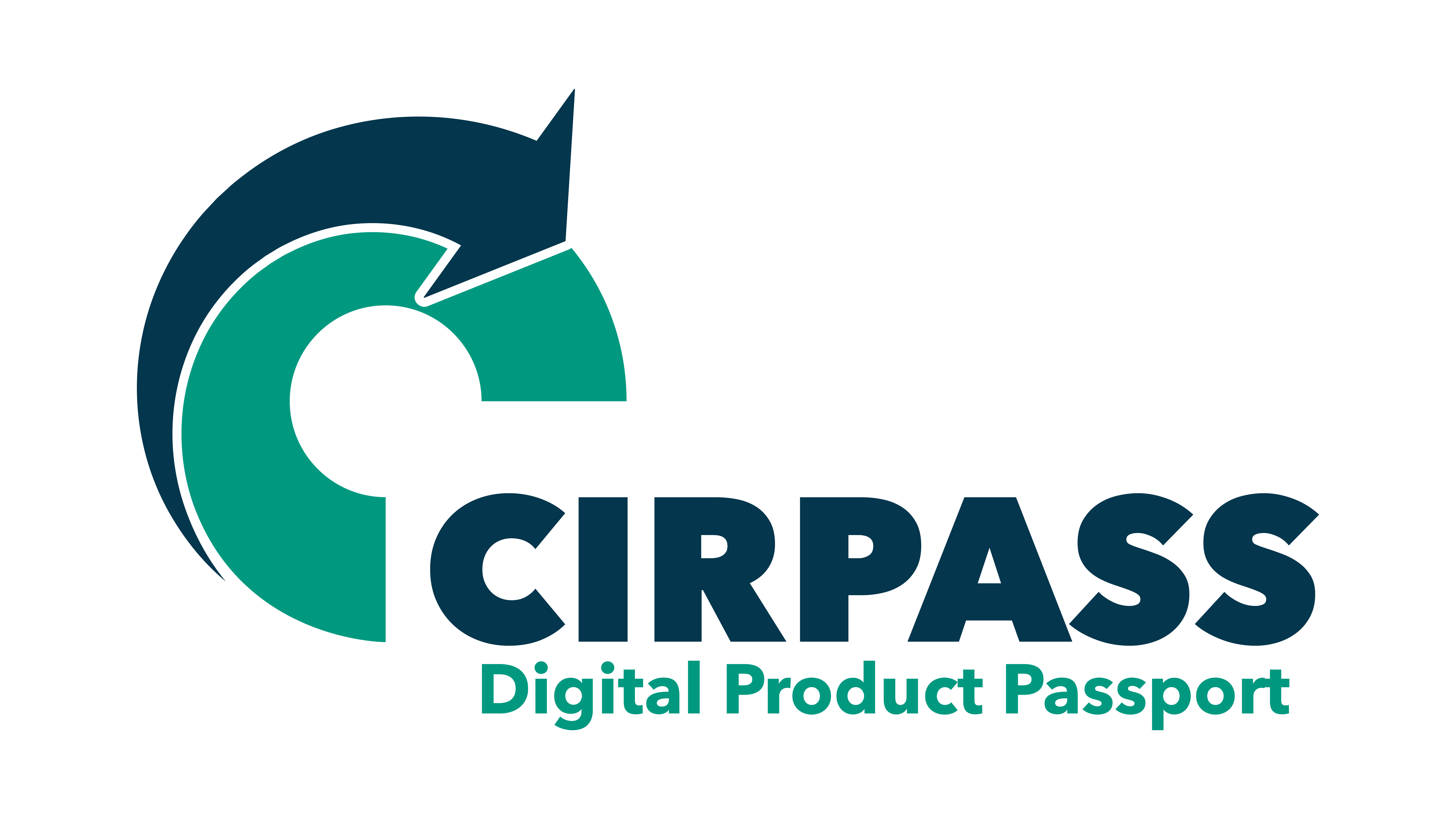Welcome to the CIRPASS Glossary V0.1
The purpose of this glossary is to lift ambiguities in the use of terms related to the DPP. For this reason, alternative definitions are sometimes proposed below, with a CIRPASS preferred choice or proposal.
For each term, you will have the possibility to provide input at any time, either by voting on your preferred definition, or by proposing a new one. Any proposed definition should ideally be accompanied with the {online} source for the definition. You also have the possibility to propose additional terms.
Based on your feedback, this Glossary will receive monthly updates until March 31, 2024.
To download the current version of this Glossary (pdf), please click here.
Access control (comment)
- CIRPASS – The question of who can access that information and to what extent (D3.1, p. 22).
Access rights (comment)
- No definitions yet
Accessory (comment)
- No definitions yet
Accreditation (comment)
- ESPR – means accreditation as defined in Article 2(10) of Regulation (EC) No 765/2008.
Accountability (comment)
- ETSI 103 881 – equivalent to answerability, liability, and the expectation of account-giving,
with the obligation to inform about (past or future) actions and decisions, to justify them. [ETSI TS 103 881].
Add value (comment)
- ISO-TC 323-WG – process of increasing the value of the object of consideration (i.e., a resource).
Circularity (comment)
- ETSI 103 881 – designing out waste and pollution, keeping products and materials in use, and regenerating natural systems.
- ISO-TC 323-WG – degree of alignment with the principles for a circular economy.
Circular economy (comment)
- ETSI 103 881 – is restorative and regenerative by design, and aims to keep products, components, and materials at their highest utility and value at all times while reducing waste streams. A concept that distinguishes between technical and biological cycles, the circular economy is a continuous, positive development cycle. It preserves and enhances natural capital, optimizes resource yields, and minimizes system risks by managing finite stocks and renewable flows, while reducing waste streams.
- ISO-TC 323-WG – economic system that uses a systemic approach to maintain a circular flow of resources by recovering, retaining or adding to their value, while contributing to sustainable development. Note to entry 1: Resources can be considered concerning both stocks and flows. Note 2 to entry: From a sustainable development perspective, the inflow of virgin resources is kept as low as possible.
Economic operator (comment)
- ESPR – means the manufacturer, the authorised representative, the importer, the distributor, the dealer and the fulfilment service provider.
- ETSI 103 881 – manufacturer, authorised representative, importer, distributor, fulfilment service provider, or any legal person with legal responsibility concerning manufacture.
Accreditation (comment)
- ESPR – means accreditation as defined in Article 2(10) of Regulation (EC) No 765/2008.
Economic operator (comment)
- ESPR – means the manufacturer, the authorised representative, the importer, the distributor, the dealer and the fulfilment service provider.
- ETSI 103 881 – manufacturer, authorised representative, importer, distributor, fulfilment service provider, or any legal person with legal responsibility concerning manufacture.
- ETSI 103 881 – equivalent to answerability, liability, and the expectation of account-giving, with the obligation to inform about (past or future) actions and decisions, to justify them. [ETSI TS 103 881]
- ETSI 103 881 – designing out waste and pollution, keeping products and materials in use, and regenerating natural systems
- ISO-TC 323-WG – degree of alignment with the principles for a circular economy.
- ETSI 103 881 – is restorative and regenerative by design, and aims to keep products, components, and materials at their highest utility and value at all times while reducing waste streams. A concept that distinguishes between technical and biological cycles, the circular economy is a continuous, positive development cycle. It preserves and enhances natural capital, optimizes resource yields, and minimizes system risks by managing finite stocks and renewable flows, while reducing waste streams.
- ISO-TC 323-WG – economic system that uses a systemic approach to maintain a circular flow of resources by recovering, retaining or adding to their value, while contributing to sustainable development. Note to entry 1: Resources can be considered concerning both stocks and flows. Note 2 to entry: From a sustainable development perspective, the inflow of virgin resources is kept as low as possible.
- ESPR – means the manufacturer, the authorised representative, the importer, the distributor, the dealer and the fulfilment service provider.
- ETSI 103 881 – manufacturer, authorised representative, importer, distributor, fulfilment service provider, or any legal person with legal responsibility concerning manufacture.
Add value (comment)
- ISO-TC 323-WG – process of increasing the value of the object of consideration (i.e., a resource)
Circularity (comment)
- ETSI 103 881 – designing out waste and pollution, keeping products and materials in use, and regenerating natural systems
- ISO-TC 323-WG – degree of alignment with the principles for a circular economy.
Circular economy (comment)
- ETSI 103 881 – is restorative and regenerative by design, and aims to keep products, components, and materials at their highest utility and value at all times while reducing waste streams. A concept that distinguishes between technical and biological cycles, the circular economy is a continuous, positive development cycle. It preserves and enhances natural capital, optimizes resource yields, and minimizes system risks by managing finite stocks and renewable flows, while reducing waste streams.
- ISO-TC 323-WG – economic system that uses a systemic approach to maintain a circular flow of resources by recovering, retaining or adding to their value, while contributing to sustainable development. Note to entry 1: Resources can be considered concerning both stocks and flows. Note 2 to entry: From a sustainable development perspective, the inflow of virgin resources is kept as low as possible.
Access control (comment)
- CIRPASS – The question of who can access that information and to what extent (D3.1, p. 22)
Will provide the short name, long name and URL of all the references.
These are defined on the second page of the master excel.

